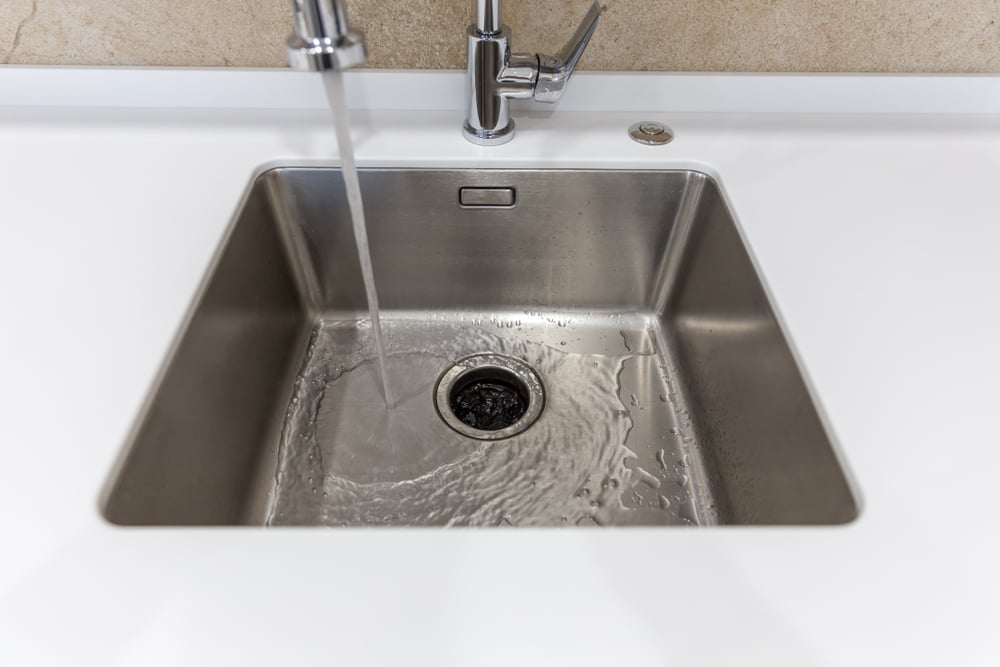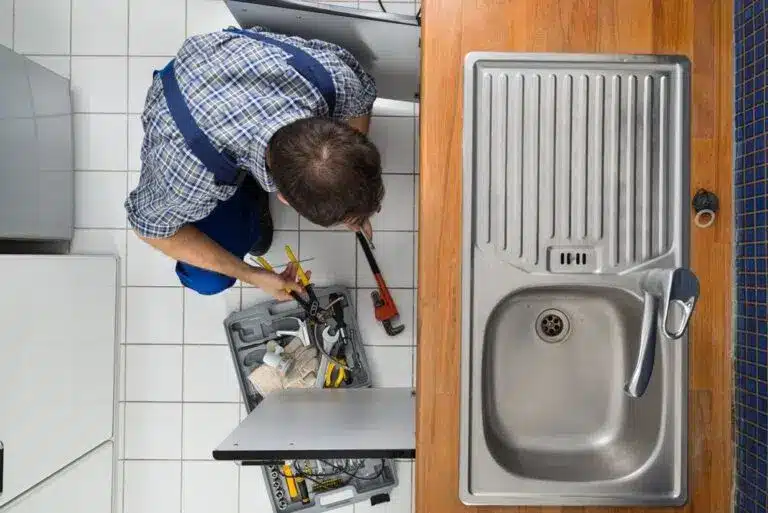Fast Solutions for Fixing a Dripping Waste Disposal Unit
Fast Solutions for Fixing a Dripping Waste Disposal Unit
Blog Article
We have stumbled on this great article about Why Is My Garbage Disposal Leaking From the Bottom? down the page on the net and figured it made good sense to write about it with you in this article.

Waste disposal unit are essential kitchen appliances that help in getting rid of food waste effectively. Nevertheless, a leaking waste disposal unit can be a frustrating and untidy issue to handle. Fortunately, numerous leakages can be taken care of conveniently with a couple of basic steps. In this short article, we will certainly go over exactly how to repair a dripping garbage disposal efficiently.
Intro
Waste disposal unit are set up under kitchen area sinks and are developed to shred food waste into smaller sized pieces, permitting it to go through the plumbing system quickly. While these devices are usually reliable, leakages can occur in time as a result of wear and tear, loose connections, or damages to the device.
Usual Causes of Leakages in Garbage Disposals
Worn Seals and Gaskets
Seals and gaskets play an important function in avoiding water from leaking out of the waste disposal unit. Gradually, these elements can weaken, resulting in leakages around the disposal device.
Loose Connections
The connections in between the garbage disposal and the plumbing system can become loosened gradually, causing water to leakage out during procedure.
Fractures or Holes in the Disposal Device
Physical damage to the garbage disposal, such as fractures or openings in the housing, can additionally lead to leakages.
Identifying the Source of the Leak
Prior to attempting to repair a dripping waste disposal unit, it is essential to identify the source of the leakage. This can usually be done with aesthetic evaluation or by carrying out basic examinations.
Visual Assessment
Evaluate the waste disposal unit system meticulously for any kind of indicators of water leakage. Pay close attention to locations around seals, gaskets, and connection factors.
Examining for Leakages
One method to check for leaks is by running water with the disposal system and checking for any visible indicators of leak.
Tools and Materials Needed for Fixing a Dripping Waste Disposal Unit
Prior to starting the repair service process, collect the needed tools and products, including a screwdriver, flexible wrench, plumbing professional's putty, replacement seals or gaskets, and epoxy or patching product for repairing fractures or holes.
Step-by-Step Guide to Fixing a Leaking Waste Disposal Unit
Turn Off the Power
Prior to trying any kind of repair work, make certain that the power to the garbage disposal system is switched off to prevent the danger of electrical shock.
Situate the Leakage
Determine the specific location of the leak and identify the cause.
Tighten up Links
Make use of a wrench to tighten up any kind of loose links between the disposal unit and the pipes system.
Replace Seals or Gaskets
If the leakage is because of used seals or gaskets, get rid of the old elements and change them with new ones.
Patching Splits or Holes
For fractures or holes in the disposal system, use epoxy or an appropriate patching product to secure the damaged location.
Examining the Garbage Disposal After Repair
When the fixing is full, evaluate the garbage disposal by running water via it to make sure that the leak has been settled.
Preventive Maintenance Tips to Stay Clear Of Future Leakages
To stop future leakages, it is vital to do regular upkeep on your waste disposal unit. This includes maintaining it tidy, avoiding placing non-food products or hard objects down the disposal, and periodically looking for leakages or other problems.
Verdict
Finally, dealing with a leaking waste disposal unit is a relatively simple process that can be finished with basic devices and materials. By following the actions described in this short article and practicing preventive upkeep, you can keep your garbage disposal in good working condition and avoid pricey fixings in the future.
HERE’S HOW TO FIX YOUR GARBAGE DISPOSAL
WHAT TO DO IF SOMETHING IS STUCK IN YOUR GARBAGE DISPOSAL
If the impeller won’t turn, there’s probably something stuck in the disposal. It could be a steak bone or peach pit, although plumbers report pulling all sorts of inappropriate objects out of disposals, such as bottle caps or aluminum foil. Make sure power to the disposal is off, and look inside to see if you can see the source of the jam.
Never stick your fingers in a disposal. Pull out anything you see with tongs or pliers.
If the disposal still won’t work, it may be time to call a plumber or consider buying a new disposal. GEM Plumbing & Heating is here for all of your garbage disposal needs.
WHAT TO DO IF YOUR GARBAGE DISPOSAL DRAIN IS CLOGGED
Take everything out from underneath your sink and put a bucket or other container under your disposal to catch any water that drains out. Disconnect your disposal from the power supply. If it’s plugged into a wall outlet, unplug it. If it’s hardwired into an electrical box, go to the electrical panel and turn off the breaker for the disposal. Pour ¼ cup of baking soda into the drain, followed by ½ cup of white vinegar. Give the solution a few minutes to fizz and do its work. Look into the disposal with a flashlight to see if you can see an object that might be causing the clog. If you see it, remove it using tongs or pliers. MORE TIPS ON DEALING WITH A CLOGGED GARBAGE DISPOSAL
Never use drain cleaner in a garbage disposal. It can damage the plastic parts inside the disposal. You can also be splashed with the caustic liquid while working to clear the clog. Beware! Never stick your fingers into a garbage disposal. Trust us — not a good idea. In many instances, your dishwasher drains through your garbage disposal. This allows the disposal to grind any large food particles that may be drained out of your dishwasher. There are some jurisdictions, however, where the plumbing code prohibits such a connection. WHAT TO DO WHEN YOUR DISHWASHER DRAINS THROUGH THE DISPOSAL
Run some water in the sink so your plunger has at least a ½-inch of water to create a seal and plunge vigorously up and down several times. You may need to repeat this several times. Run hot water down the drain to clear any residue that remains.

I recently found that blog entry about Garbage Disposal Leaking From Bottom when doing a lookup on the web. Sharing is caring. Helping others is fun. Thank-you for going through it.
Click Here Report this page